Media | Articles
This 1000-hp C5 Corvette won’t quit until that one perfect lap
More accustomed to his eight-second drag Camaro, Sean Cagle wasn’t swayed by the idea of lapping a road course in a basic production car. A persuasive friend insisted he try it. About a decade ago, when Cagle finally got his road course maiden voyage in an SVT Cobra track-prepped by Caliber Customs, the drag racer began singing a different tune.
“I remember wondering, ‘When the hell is he going to brake?’ I knew we were going to crash, but the car stuck. I just couldn’t believe a basic Mustang could do that,” he says.
Cagle wanted to feed his newfound love for cornering. Building a domestic track car that could match his drag Camaro for performance stats seemed costly, however. As long as he wasn’t crashing into other cars, he figured, he could swing it. That thinking steered him away from wheel-to-wheel competition and into the wild world of time attack.
From Camaro to Corvette
In time attack, it’s one car on track at a time. Driver and car compete against the clock. For his battle against the stopwatch, Cagle started with another Camaro—a fourth-gen like his drag car—but ultimately went for a bolder, smaller, lighter, and more aerodynamic build: a C5 Corvette Fixed Roof Coupe (FRC). Naturally, he partnered with Caliber Customs and owner, Matt Lambrecht, for maintenance, modifications, and race support out of Madera, California, north of Fresno. After adding a cage, a Racetech bucket seat, a cam, an exhaust, and a set of Toyo R888 tires, Sean was already setting laps on the 13CW configuration of Buttonwillow Raceway in the 1:55 range. Pretty remarkable for a lightly tuned, $15,000 car.

The C5 Corvette, even in stock trim, is a great road course machine. The manual transaxle helps with traction, the V-8 motor is plenty pokey, weight is moderate, and the driver enjoys a direct, unfiltered connection to the car via each input. That said, the steering is a bit slow in a motorsport context, but the feel through the wheel is encouraging and the steering effort, once the tires are warm, is high. The front end feels intuitive and easy to place. There are no invasive driver aids in this car, so it can bite, but the Corvette FRC is not as unforgiving a car as some would believe.
Performance tuning is all about chasing equilibrium, and Cagle’s modified C5 was suddenly lighter and capable of much more grip than was compatible with the factory leaf spring suspension rates. The consequence was ridiculous body roll, which Caliber solved with a set of double-adjustable Penske shocks, along with that AP Racing Radi-Cal front brakes. (The C5’s entry cost is low, but it does eat up consumables like tires and brakes.)
Once the car had put up some competitive times, closer to the low 1:50s, Cagle and Lambrecht felt confident they could make a mark in the Global Time Attack race series. Their first event was at Buttonwillow in March 2016; the C5 took first place in the Limited RWD class with a time of 1:53.34 around the 13CW configuration.
Beginner’s luck? Careful preparation? Cagle didn’t care. He’d found success in a competitive environment, and the culture of the series suited his temperament.
“Country boys” make their mark
Global Time Attack hosts a fiercely competitive field that includes a number of six-figure builds, but the entrants nevertheless maintain a casual, supportive atmosphere. “I’ve had my competitors lend us tools and parts when, otherwise, we would’ve been screwed,” Cagle says. Try finding that in comparable road racing series.

Sean and Caliber describe themselves as the “country boys” of Global Time Attack. They pride themselves not only on their ability to hang with the larger and better-funded teams, but also their contribution to the convivial atmosphere in the pits. “We see ourselves as the jokers of the GTA bunch and we party hard,” Cagle explains. “If you’ve been by our pits after the sun’s set, you’ve likely been offered one of the fine whiskies we’ve tabled.”
The pressure to find those last vital tenths is palpable, however. For Cagle, it’s the main force that keeps him coming back. “I’ve got one lap, a $2000 set of sticker tires, friends and family watching, 190 beats a minute, and I’m gridded up against some incredible drivers. It takes all my focus. I’m getting chills thinking about it,” he gushes.
Forced induction
Toward the end of his first season, the C5’s 5.7-liter LS1 V-8 started losing oil pressure. It was a good opportunity for Cagle and Lambrecht to pause, discuss a rebuild, and map out their grand plans for the future. The next mountain to climb: Global Time Attack’s Unlimited class and a lap goal of under 1:40 on Buttonwillow 13CW.
To shave off more than 13 seconds they’d have to double the Corvette’s power output. A highly-strung, 7.0-liter LS7 V-8 could have met their power goals, but not cheaply or for very long. The duo thought back to their teenage years, when they raced their turbocharged Camaro at the drag strip with great success. “Our thinking was simple,” Sean explains. “Turbos might give us the power we needed with better reliability than what the normally aspirated [LS7] engine could offer.”
There were other upsides: “We also wanted the whistling noises.”
Marketplace
Buy and sell classics with confidence
Snappy turbocharging seemed to check all the boxes, but Cagle and Lambrecht knew they could not skimp on hardware. Any lag that would delay throttle application was a non-starter. They settled on an 6.0-liter LS2 V-8 (standard on the subsequent C6-generation Corvette), filled it with tougher internals, bored it to 6.1 liters, and fitted it with a Holley Dominator ECU. The stage was set for the best boost on the market.
With optimal throttle response as the goal, they took a page from the book of then-Ultimate-series-leader Will Au-Yeung, who ran a BorgWarner EFR turbocharger. This range of high-tech turbo technology, specifically the EFR 7163 model, suited Cagle’s C5 FRC build for a two important reasons:
- Tight Packaging: To fit a turbo and its piping on both sides of the engine, behind the front axle and low in the chassis, the system had to be compact. The EFR is not particularly large.
- Turbine Wheel Mass: The EFR’s titanium aluminide compressor wheel is 50 percent lighter than the same-sized wheel made of Inconel, making it one of the lightest on the market. Less mass means less lag, which means a response and drivability closer to that of a normally aspirated engine.
They settled on a pair of small-frame EFR 7163s. The two turbos allow for nearly 1000 horsepower and can transition from full vacuum to their full 16 pounds boost in 0.4 seconds.
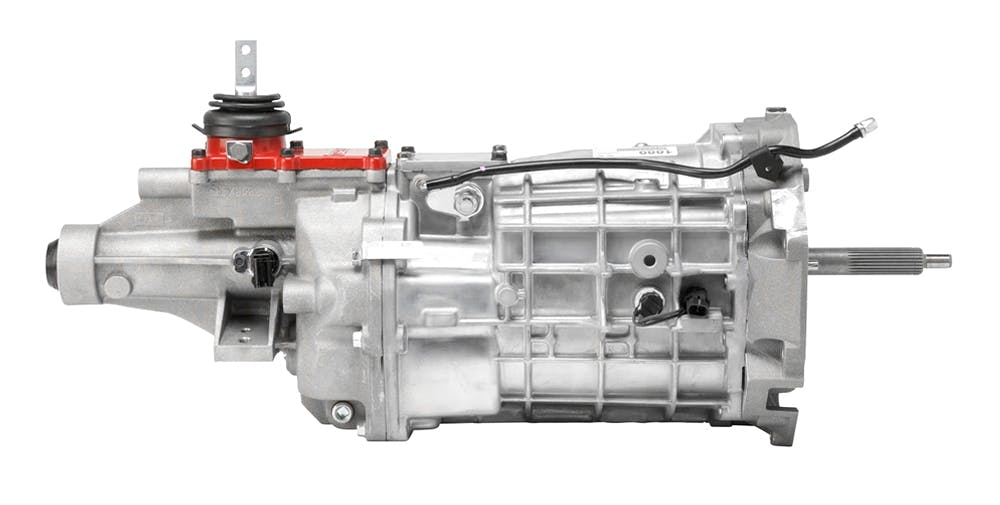
That feisty response imposed some restrictions on the length of the car’s sessions. Quick boost response requires a compact turbine housing, but pushing all of that boost through the an 0.85 A/R (area over boost) housing caused exhaust temperatures to soar as high as 1860°F. That’s 160 degrees hotter than the compressor wheel is rated for.
The build quality of the EFR turbo, they figured, was solid enough to handle the excess heat, but concerns remained during the first outing with this new motor. Cagle had to be cognizant of the temperature during his initial laps, making sure to keep the engine sufficiently cool as he started taking mental notes on the new setup.
Spinning plates
Time attack is all about setting the fastest-possible lap, which is a carefully coordinated endeavor. The C5’s turbo temperature limitations permit one fast pass before the turbos overheat, among a number of other crucial variables to juggle.
The most visible strategy is that the Corvette’s tires are kept under warmer blankets, making it one of the few cars in Global Time Attack to do so. Because of these critical target temperatures, the car cannot sit on the grid awaiting its turn. As a result, it is always the last to join, escorted past the queue like a detained criminal onto an airplane. After setting its one fast lap, it’s usually the first ushered off the track.
Then there’s the matter of fuel: The race car’s Radium fuel cell holds a mere eight gallons. By the time the car leaves the pits, completes an out-lap, a flying lap, and an in-lap it’s 5 gallons lighter in under 5.5 minutes or so.
Even without the fuel constraints, it’d be tough for any driver to last much longer behind the wheel. The engine’s oil catch can vents some of its contents into the cabin, but because the entire cockpit is sealed to reduce drag the vapors don’t dissipate. “After one lap, my eyes were watering,” said Time Attack ace Kevin Burke after a couple casual laps in the car.
Clutch temperature is another thing to monitor: Cagle only needs third and fourth gear to round Buttonwillow, so he doesn’t need to shift all that often. He must, however, remember to completely release the clutch pedal before applying throttle or the clutch will slip. More slip yields higher clutch temps.
As we look, Cagle sets out tentatively for his session, careful not to overcook the turbos or the tires. (The car has no traction control, either.) All told it is a fairly straightforward driving experience, he notes, provided the driver respects the copious power on tap—and all of the essential operating windows.

Burke agreed, impressed with its approachability and capability: “It rides on clouds and absorbs every curb. The on-limit behavior is progressive. You don’t realize how fast you’re going because it works so well.”
Driving is but one part of a complicated development process targeting the car’s ultimate potential. After rolling back into the pits, Lambrecht plugs his laptop into the car’s computer, rifles through minute data points: exhaust gas temperature, turbo wheel speed, throttle input, fueling, crankcase pressure, knock activity. After the download comes a quick debrief before Cagle suits up for another run.
A cleansing fire
It wasn’t always so seamless. Back during their first outing with the turbo motor, Cagle and Lambrecht were still learning how to get the car to behave. With a build of this magnitude, one or two errors are understandable, but they turned out to have disastrous consequences.
At the time of the fateful incident in November 2018, the C5’s crankcase ventilation catch can was located above the downpipe. There were no signs during dyno testing that this should be cause for concern, but that changed out in the real world. Once the lateral g forces came into play that first track day, engine oil worked its way out the valve cover breathers and completely filled the catch can, all in the space of one hot lap.
By the time Cagle started his second lap, he saw smoke. The flames spread faster than he could react, preventing him from unlatching the hood, grabbing the extinguisher, and pointing it at the source in time. His desperate attempts to douse the fire through a hood vent were in vain.
He dropped the dinky fire bottle and felt his heart sink, turning to witness the support truck taking the long way to the scene. By the time it arrived, he was already walking away from the charred wreckage.
The Corvette needed new front body panels, new plastics, new turbos, a new wiring harness, and a smattering of other bits that had been irrevocably burned. Cagle had some reservations about fixing the car, given the scale of the damage, but he’d committed to the cause—as did the team who took responsibility for the fluke catastrophe. Everyone resolves to rebuild the car better than before.
Phoenix reborn
By the time the crisped car made it back to Caliber Customs, the team was already planning a big-time return. A few additions promised improved high-speed performance. Along with a complete AJ Hartman Aero package, Caliber added KW EXR three-way coilovers. Optimized with trackside support from KW’s lead engineer, this suspension helped the car confidently attack curbs at higher speed.
The team also sourced an engine block from a 6.2-liter LSA V-8, within which additional webbing allowed for more boost. A full manual Tilton pedal/master setup helped improve brake feel, and fine-turning the brake system for travel, pressure, bite, and release made it a confidence-inspiring setup. With no ABS on board the C5, Cagle was grateful for all the feedback he could get.
With a motorsports-grade harness, the best of five sampled heat wraps, a Dailey Engineering dry sump, a relocated catch can, and the bit between their teeth, Cagle and crew returned to Global Time Attack for the 2019 Finals at Buttonwillow. “We wanted redemption,” Lambrecht declares.

Feeling the wind in his sails, Cagle strapped into the latest iteration of his dream car and set a time of 1:44 on his first flying lap. Clearly, he’d lost nothing from the time away. The team’s final time at that event was a 1:43.2, placing them in second place behind champion drifter and road racer Dai Yoshihara. Redemption achieved.

Though the C5 build had proven its capability, Cagle and Caliber took another stab at the last Global Time Attack Finals in November of 2022. They made quite a splash, logging a 1:40.2 that bested decade-long Billy Johnson’s RWD Unlimited record. Many whiskies were poured that evening.

Better still, on-board data indicated the car had more to give—a 1:38 was feasible. That time was even projected using predictive timing software during the competition, at least until the boost pressure crept up too high and triggered the system to cut ignition for several seconds. With a little luck, sub-40s are well within reach.
“I have a love-hate relationship with this car,” Cagle says. “It requires so much from me and the rest of the team. I have to rely on these knowledgeable, meticulous professionals—Matt, Mikey, Nick, and Steve—to run this car. It’s a complicated machine, so everyone has to be sharp.

“I can live with that, though. That is the price of going extremely fast—and it’s a price I was willing to pay since I wanted to see what it was capable of with the best people and products thrown at it.”
Breaking their own record at Buttonwillow 13CW is the next big goal. For all the necessary stars to align demands an unparalleled organizational effort from the outset, but the players involved consider it a deeply rewarding one to pursue. Cagle and Lambrecht, along with the rest of Caliber Customs, may yet manage that one perfect lap.
***
Check out the Hagerty Media homepage so you don’t miss a single story, or better yet, bookmark it. To get our best stories delivered right to your inbox, subscribe to our newsletters.









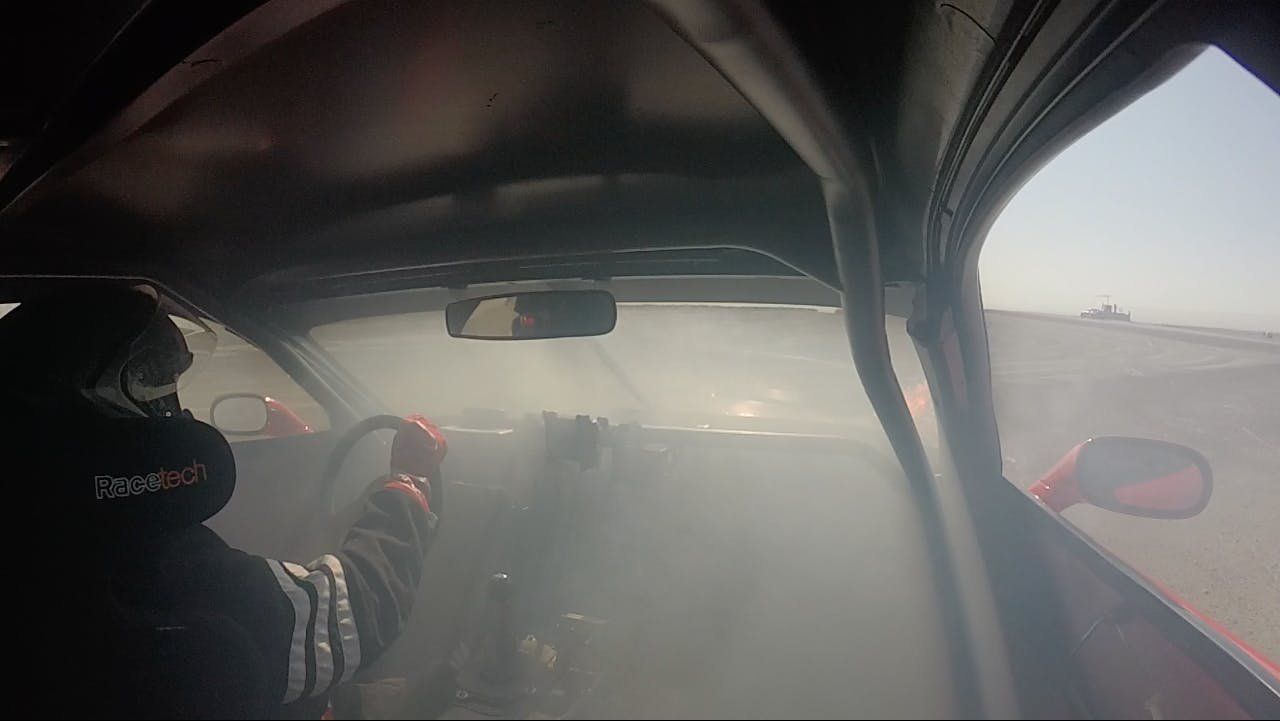

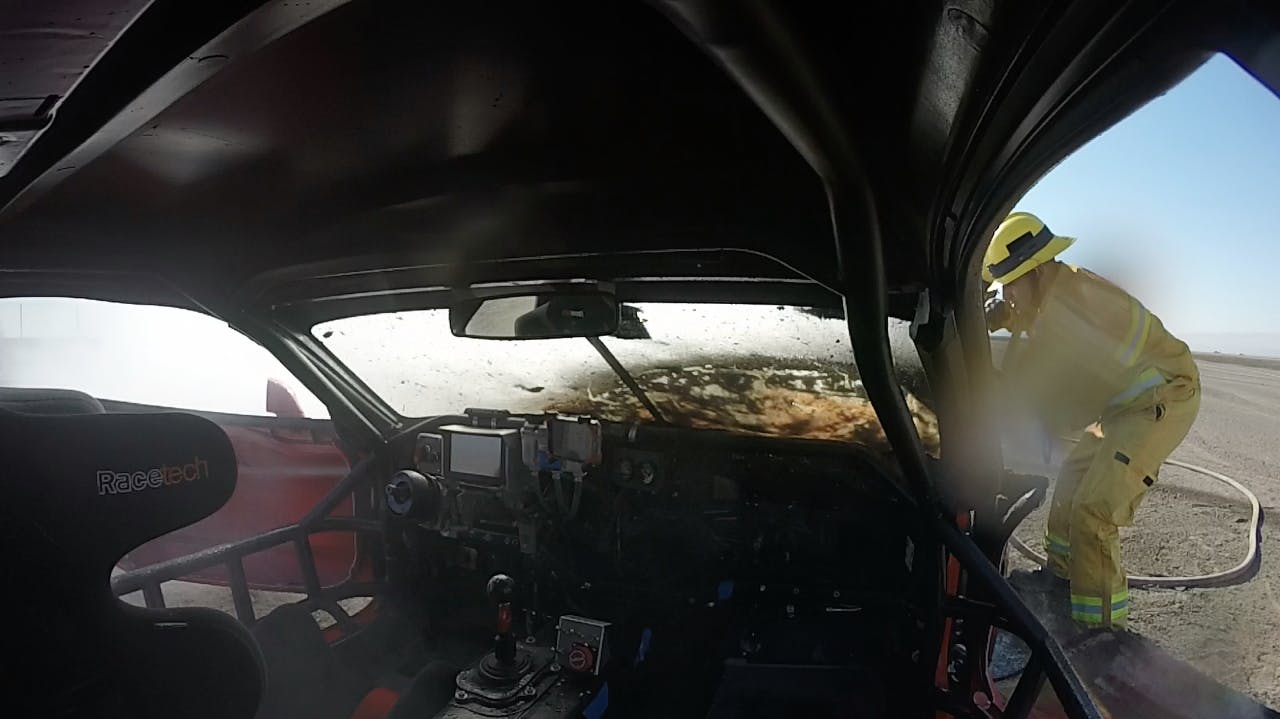

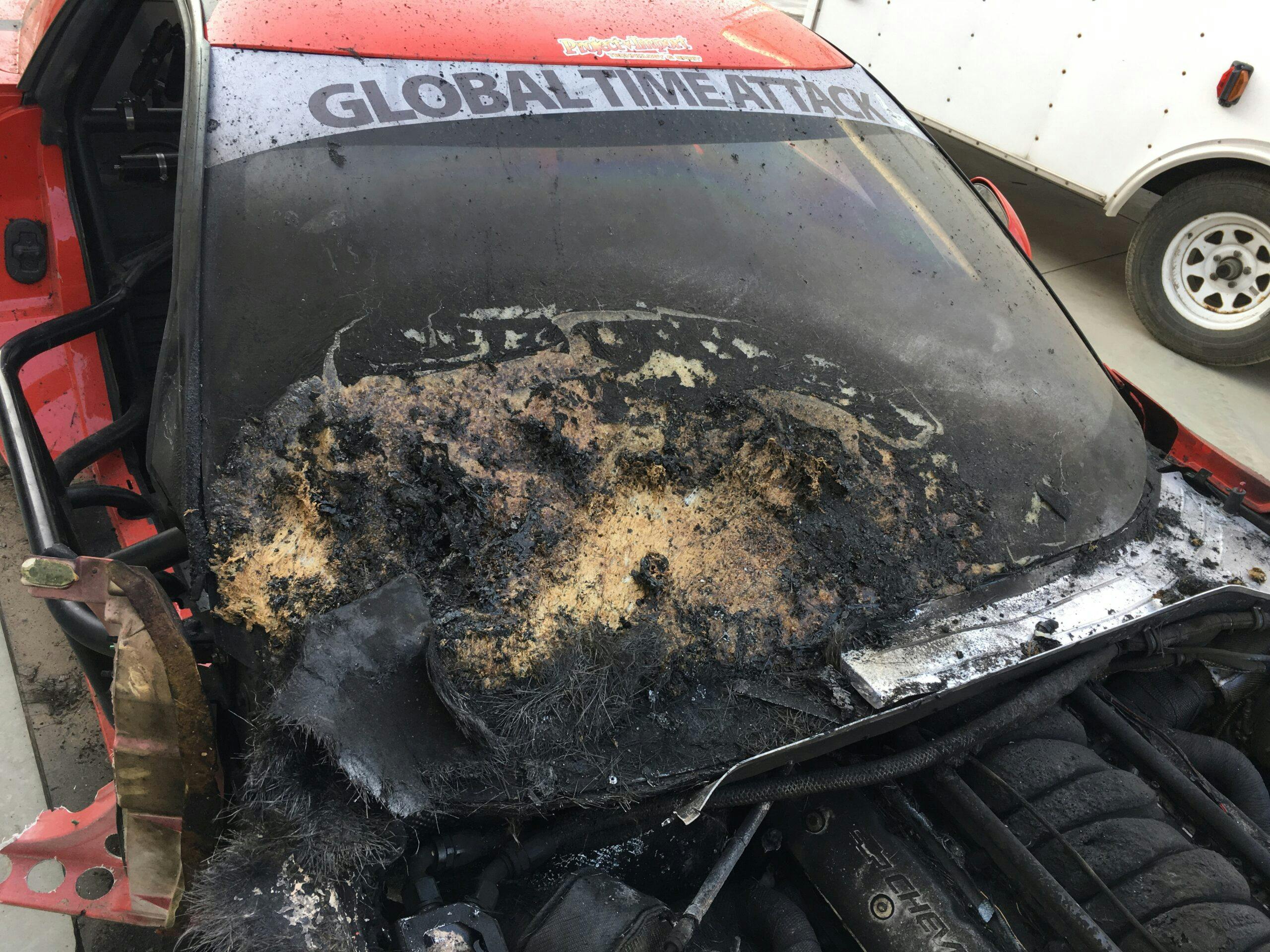
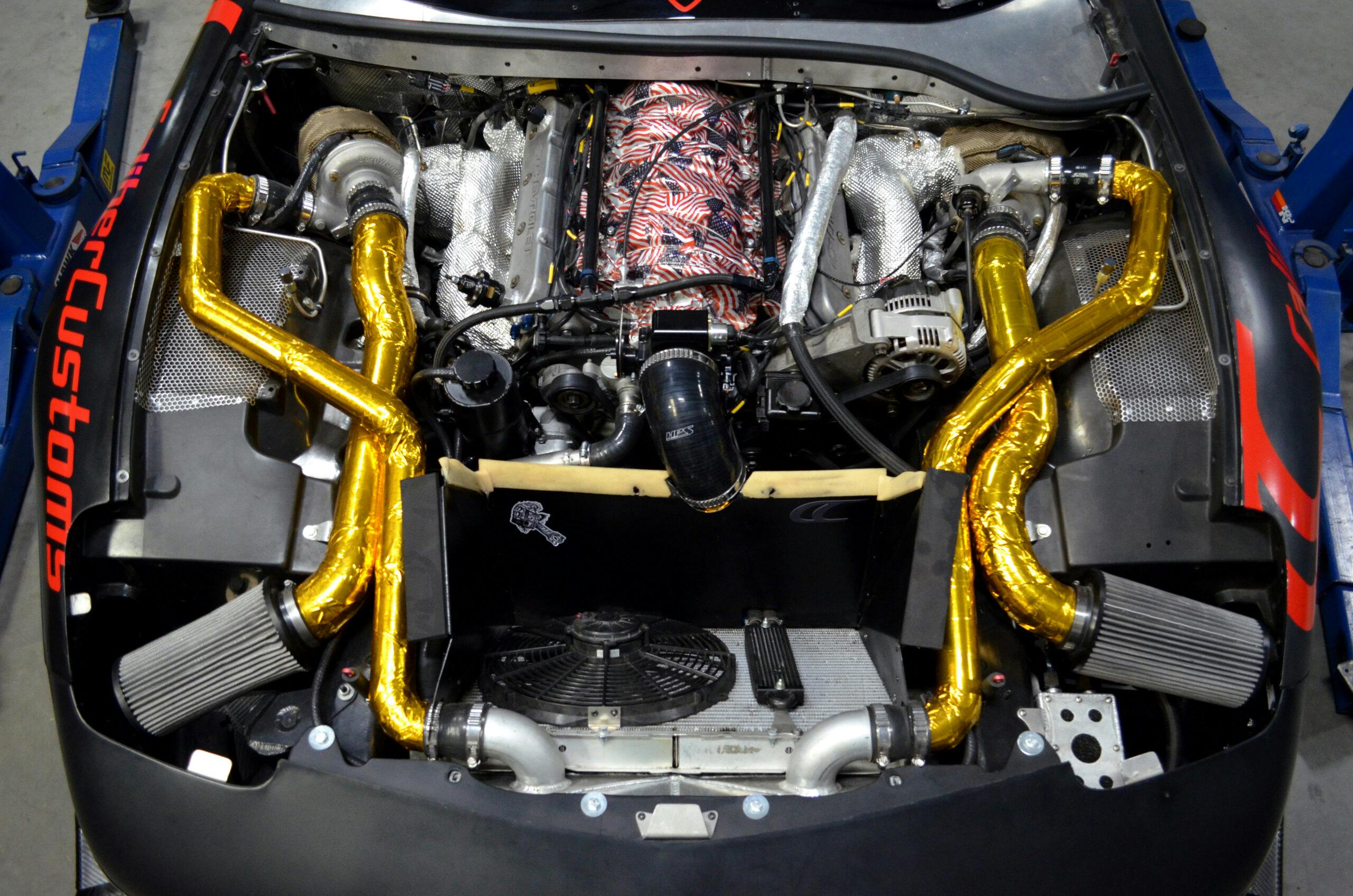
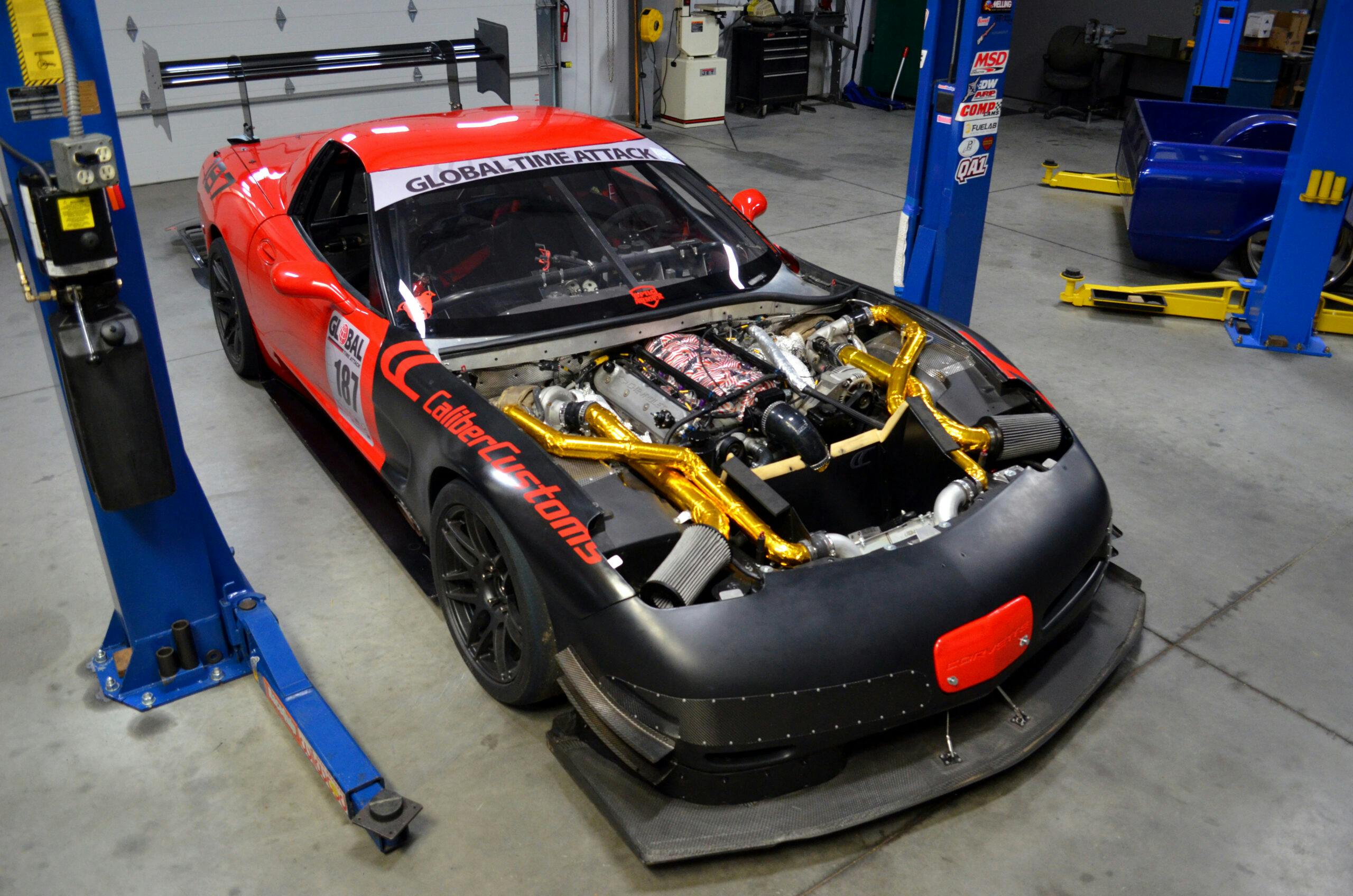
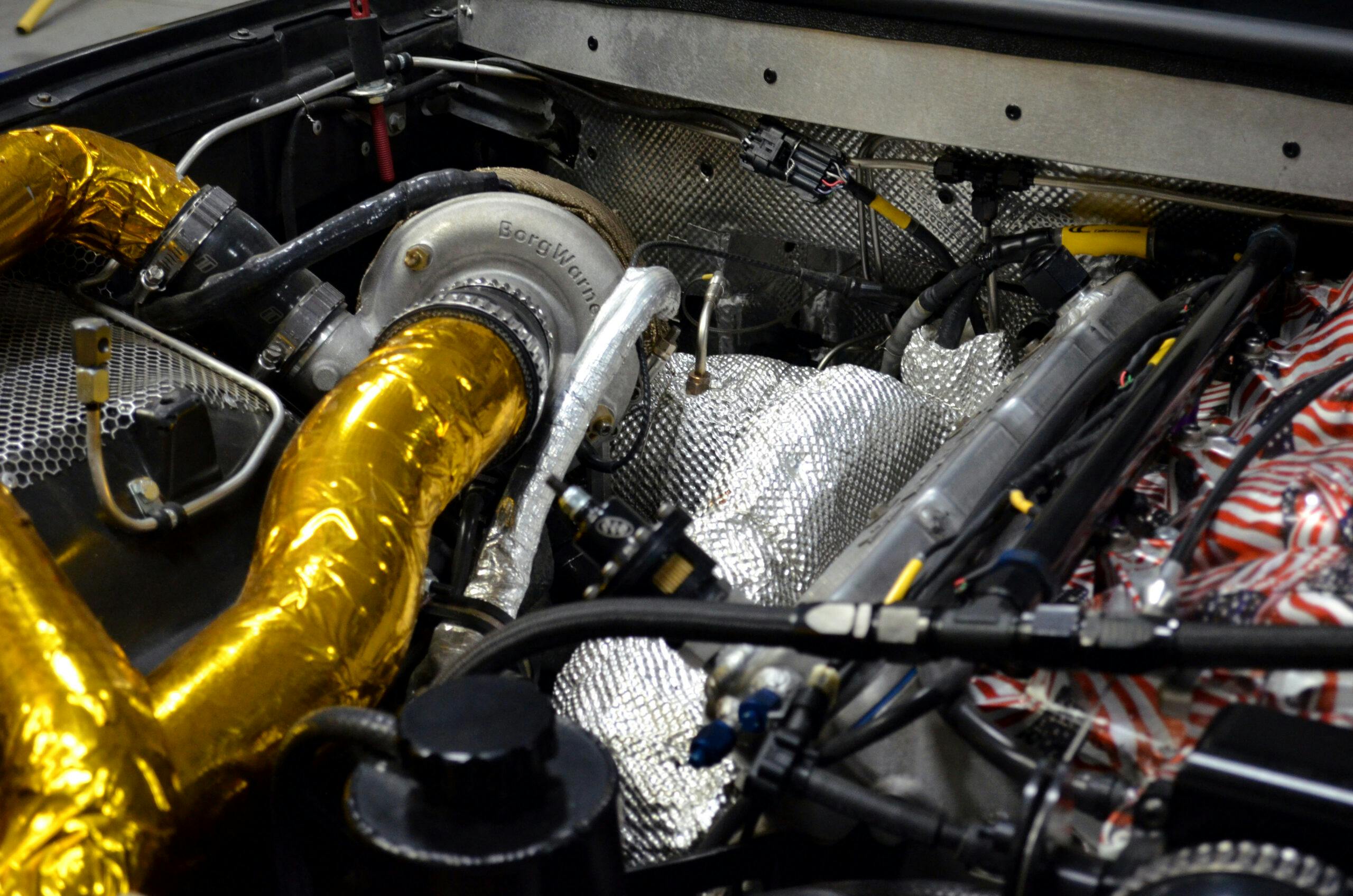
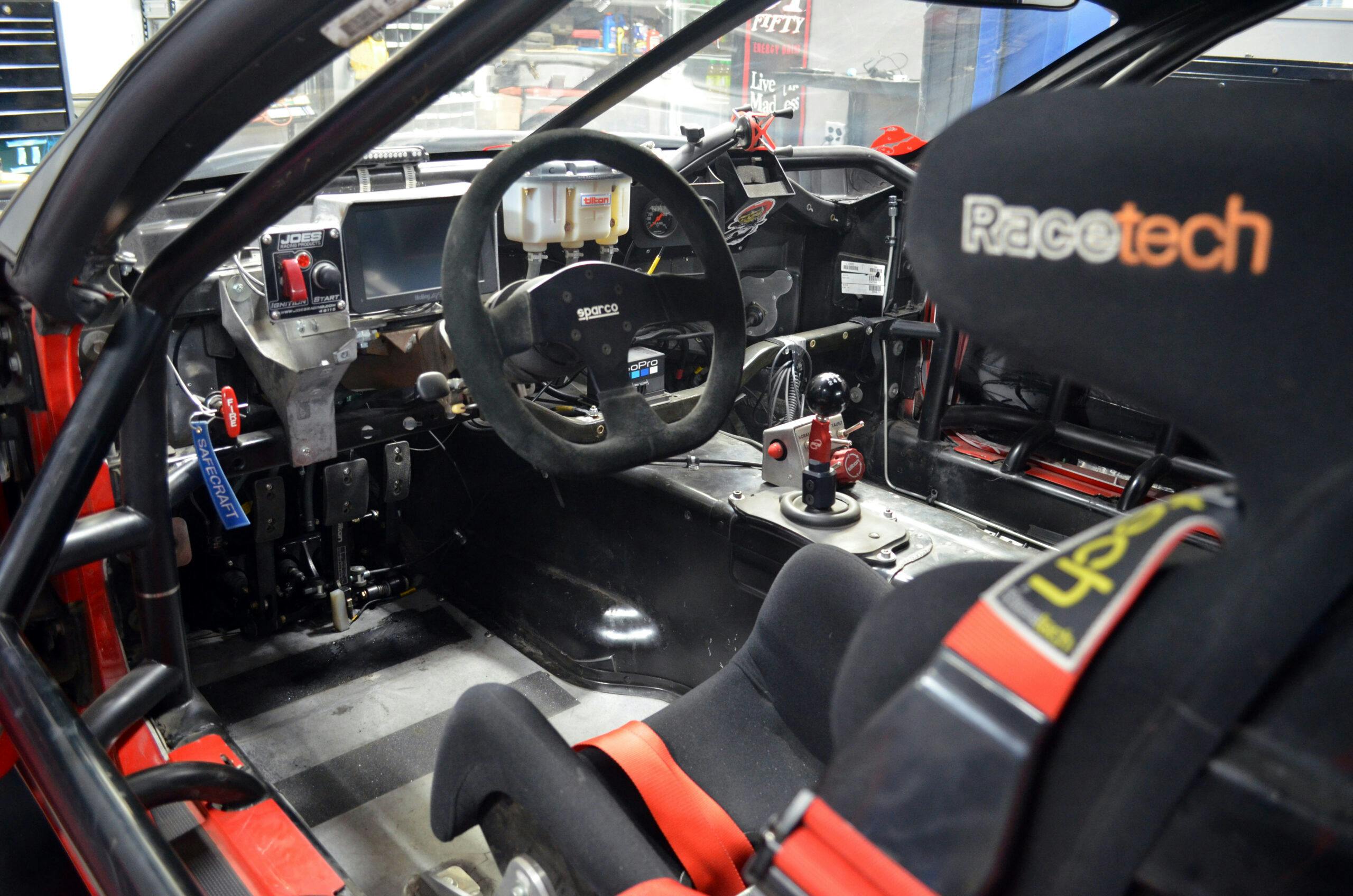
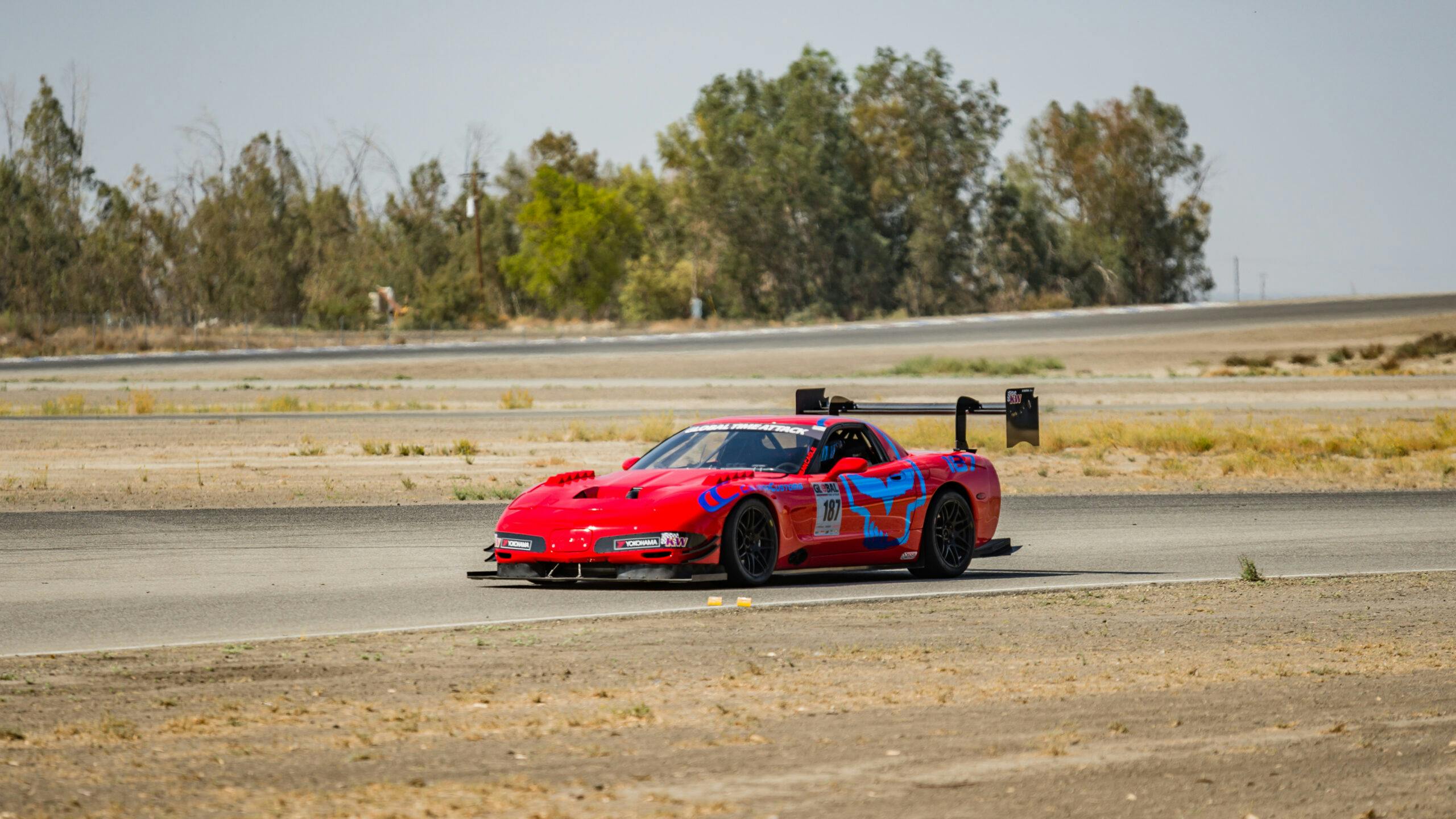
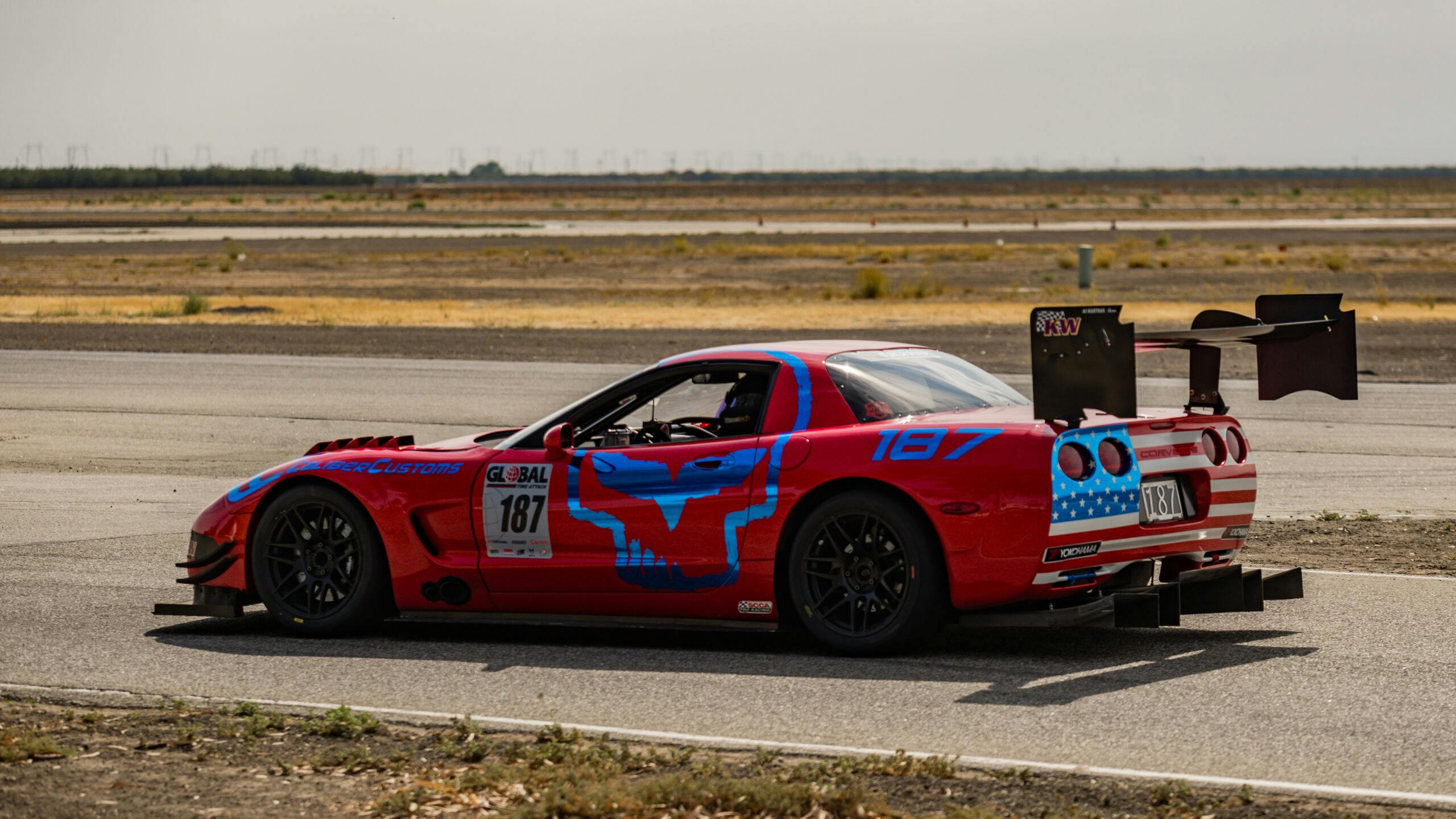

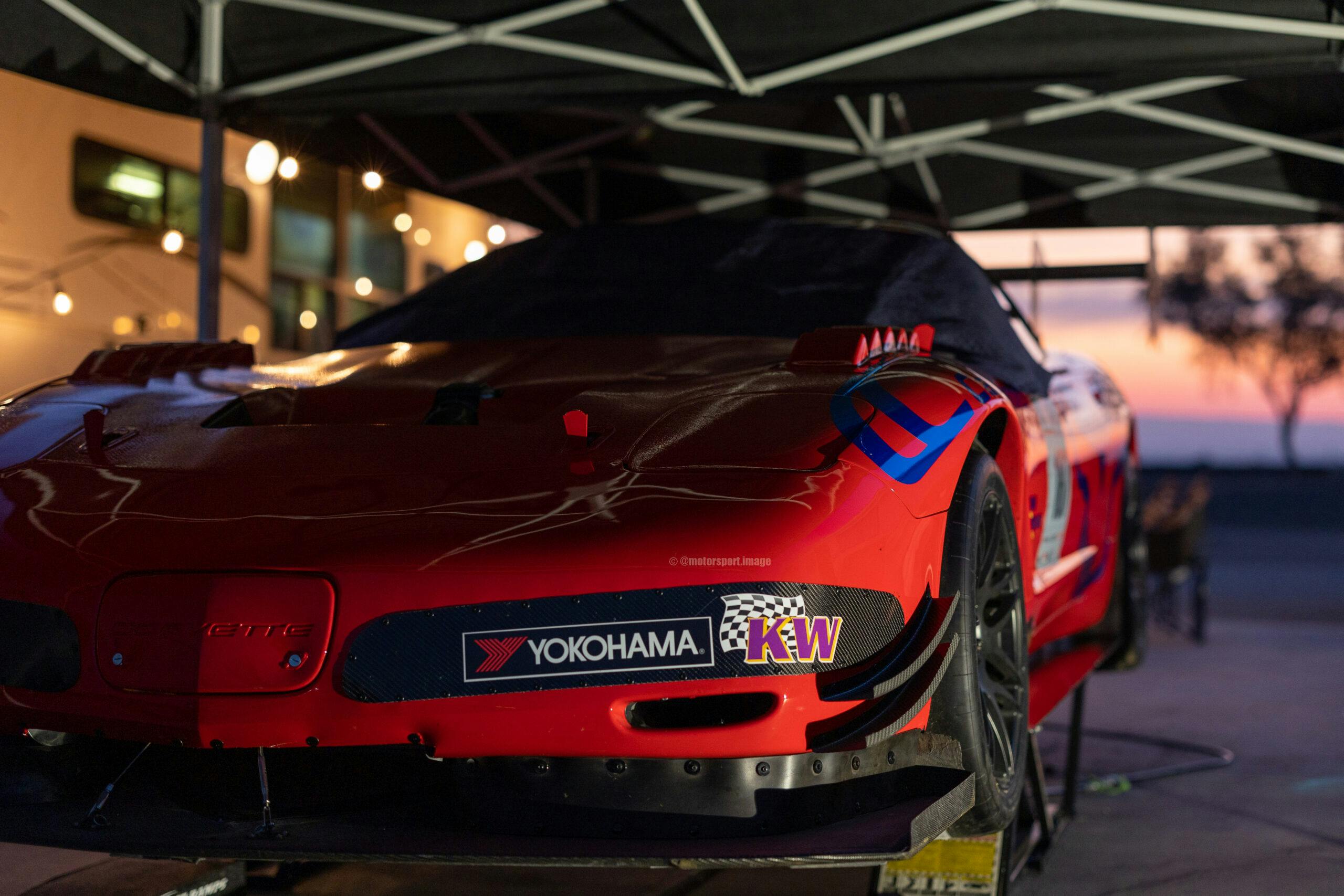

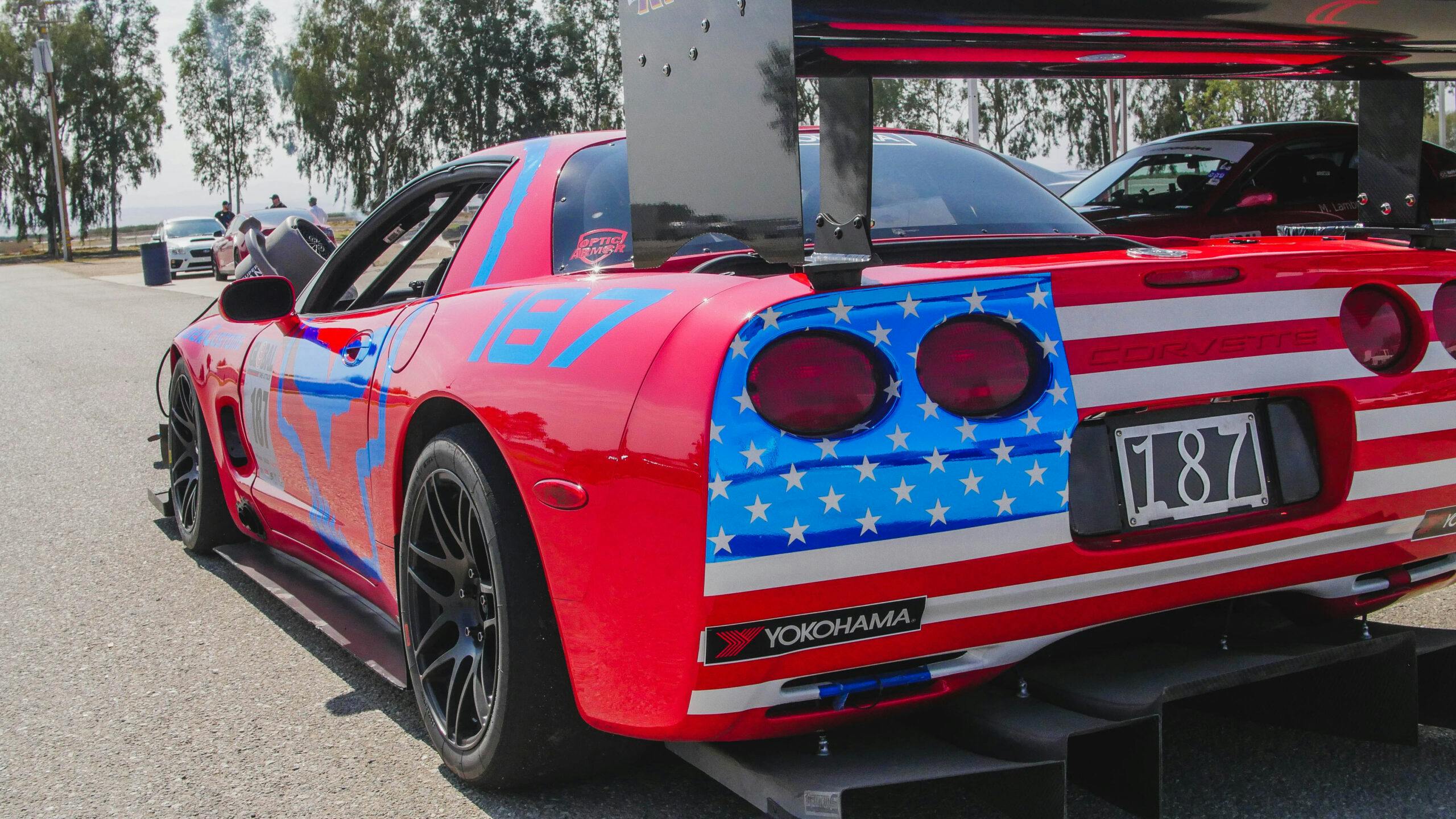







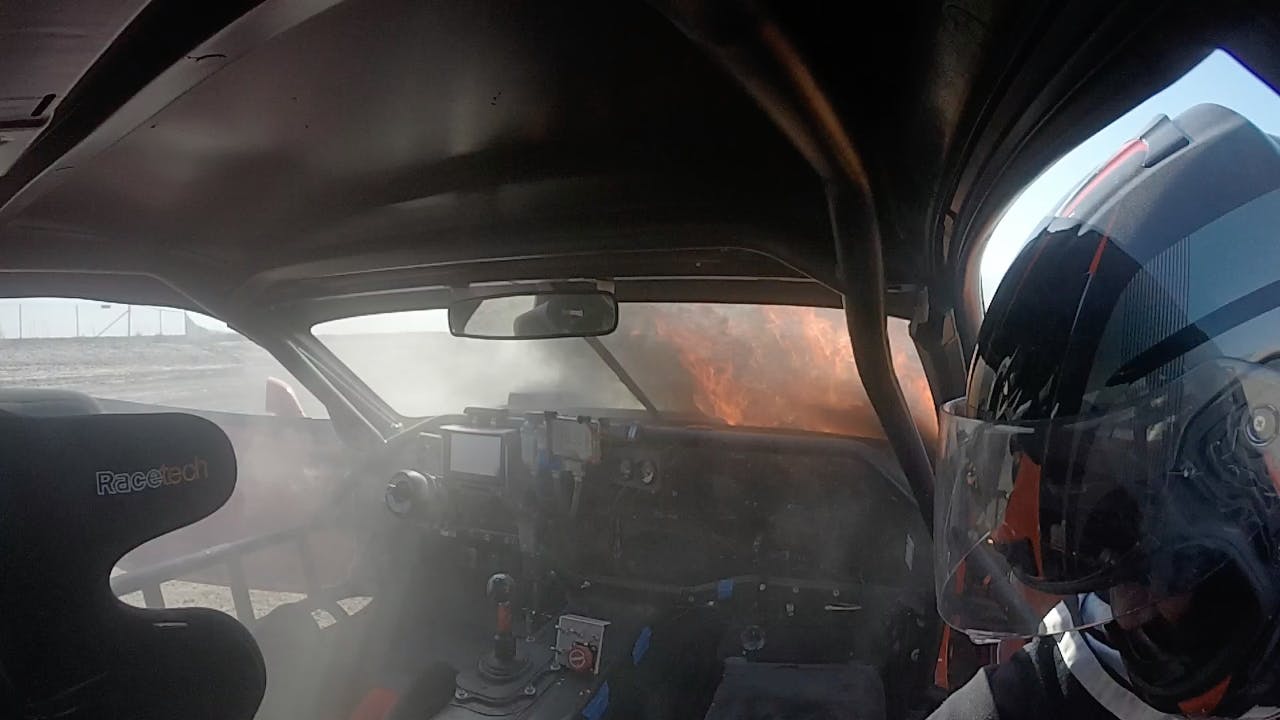




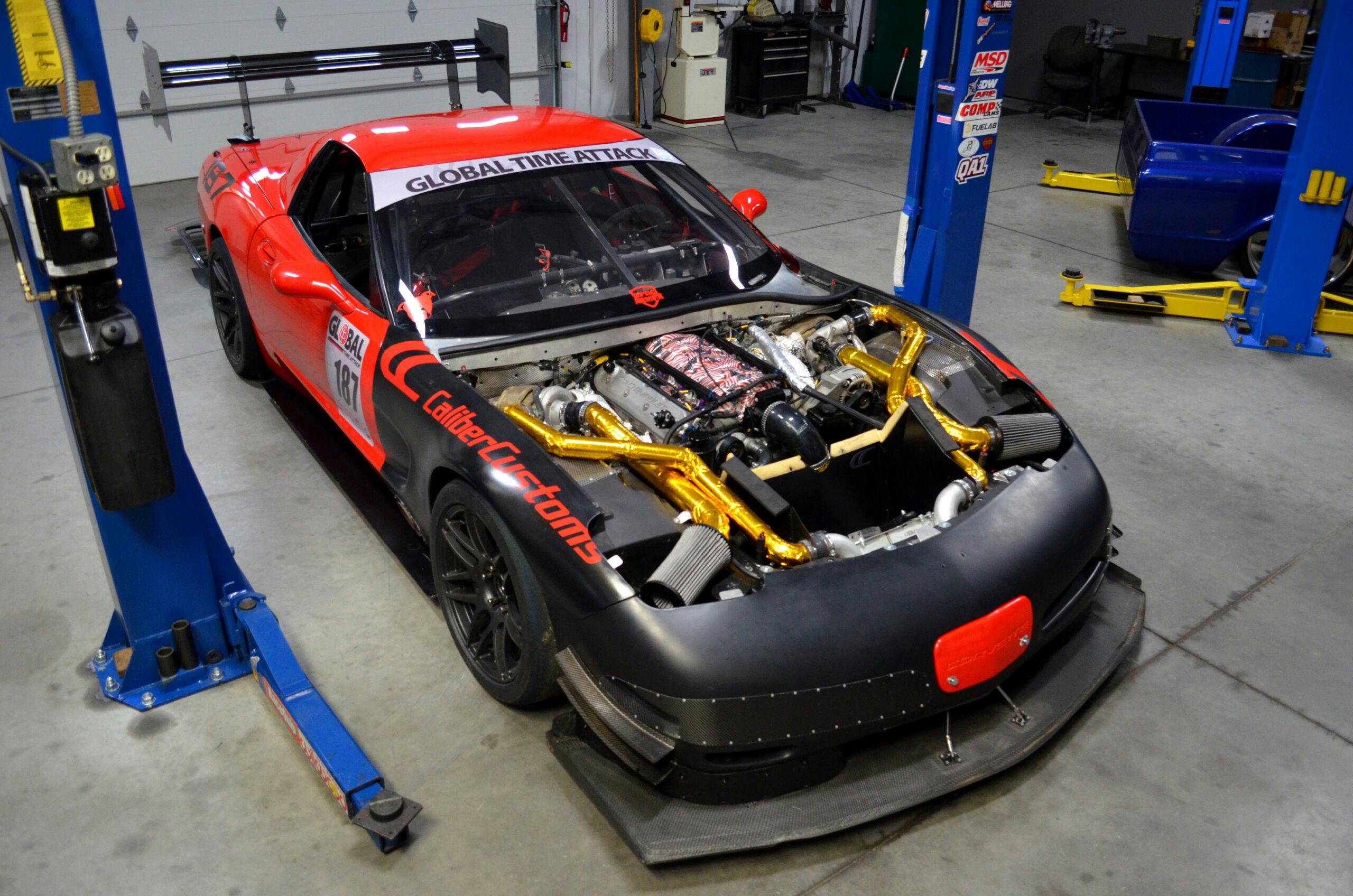












The C5 is a Tuner Dream and track time car. Cheap to buy and any LS engine will fit it.
The current car looks far more researched and thought out. It looks good!